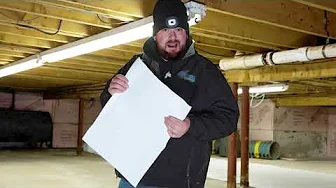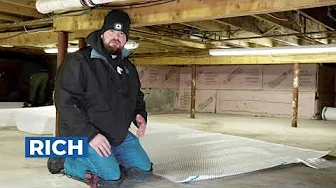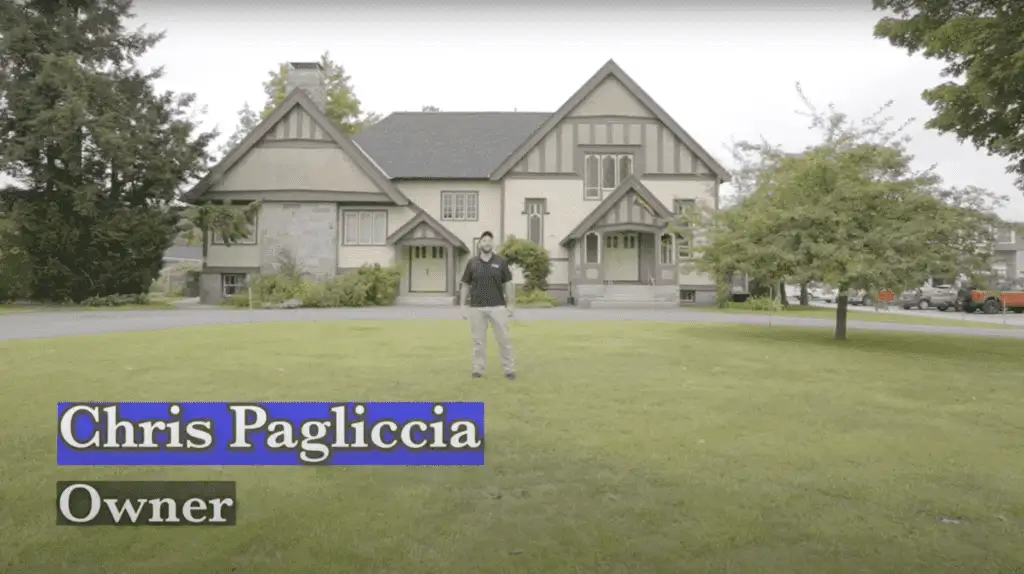Foundation Crack Repair South Duxbury MA
Cracks in a foundation are more than just an eyesore—they signal potential structural issues that can worsen over time. For homeowners in South Duxbury, MA, addressing foundation cracks promptly is essential to maintain the safety and value of your property. Ignoring them may lead to water infiltration, uneven floors, or even costly repairs down the line.
Real People - Real Great Results
Crawl Space Video Playlist
Understanding Foundation Cracks
Foundation cracks are like the warning lights on your car’s dashboard—they’re not always catastrophic, but ignoring them is a gamble you don’t want to take. To deal with them effectively, you first need to know what you’re looking at and why it’s happening. Let’s break it down.
Why Foundation Cracks Happen
A foundation is designed to hold firm, but the forces acting on it over time don’t make it easy. The ground beneath it shifts, water flows and freezes, and materials naturally wear down. Here are the main culprits:
- Ground Movement and Settling: South Duxbury’s soil composition, weather, and time itself cause the earth to shift, which can stress even a well-built foundation.
- Freeze-Thaw Cycles: If you’ve ever forgotten a soda can in the freezer, you know the power of expanding ice. The same thing happens to soil and concrete in the winter: thawed water seeps into small crevices, freezes overnight, and pries them wider.
- Improper Drainage: When too much water pools near your home, the soil expands, pushing your foundation outward. Too little water? The soil shrinks, leaving your foundation unsupported. Either way, cracks can appear as the concrete responds to these shifts.
- Aging: Like anything else, the materials in your foundation weaken over time. If your home is pushing several decades, hairline cracks may not be unusual—but they still warrant attention.
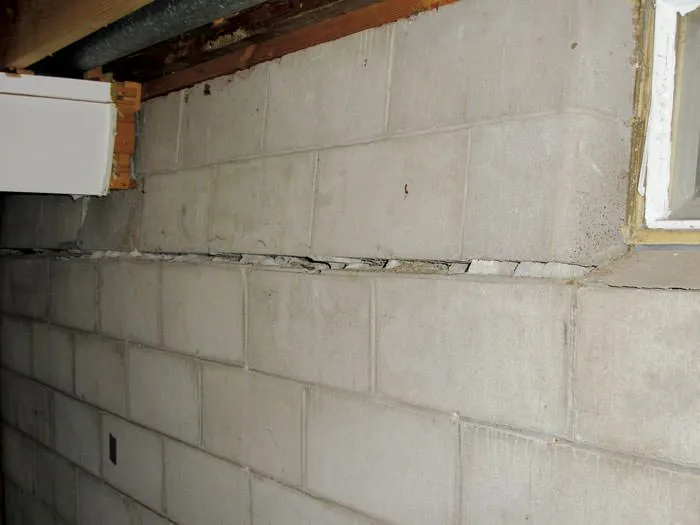
Types of Foundation Cracks
Not all cracks are made equal. Their direction and size tell a story. Here’s what they mean:
- Horizontal Cracks: These are the big red flags. They usually occur when the outside soil pushes in with too much force, potentially signaling major structural risks.
- Vertical Cracks: Vertical cracks are common and typically less ominous. They’re often caused by settling or minor stress over time but should be sealed to avoid water infiltration.
- Diagonal Cracks: A diagonal crack often suggests uneven settling. Maybe one corner of your home is dealing with softer soil or poor drainage, which pushes the load unevenly.
- Hairline Cracks: They might look harmless, but hairline cracks can be sneaky troublemakers. Monitor them closely—if they grow wider or start leaking, it’s time to act.
When To Be Concerned
Not every crack needs immediate repairs, but you should know the signs that spell danger. Take note if:
- A crack is wider than 1/4 inch. Anything beyond that may require structural intervention.
- You spot new cracks forming, especially if they seem to show up quickly or grow longer over weeks.
- Moisture seeps through the cracks, leaving damp spots or mold growth.
- You notice other signs your home is shifting, like sticking doors, misaligned window frames, or sloping floors.
Understanding your foundation’s quirks is the first step to safeguarding your home. A little vigilance now prevents a lot of headaches later.
The Risks of Ignoring Foundation Cracks
Neglecting foundation cracks is the kind of gamble that rarely pays off. Unlike a squeaky door or a dripping faucet, these aren’t issues that stay in stasis—they escalate, and often in ways that hit harder than expected. Here’s what you’re risking if you push foundation cracks to the “someday” pile:
- Structural Integrity: Cracks grow. That’s just what they do. And as they widen or extend, the strength of your foundation erodes. A small fissure today could evolve into a major structural faultline tomorrow. Over time, this can cause walls to bulge, floors to sag, and the overall stability of your home to falter. What starts as a crack could end as a major reconstruction project—and not the kind that falls within a comfortable budget.
- Water Damage: Every crack is an open invitation for water to seep in. Moisture will find its way through even the smallest crevices, especially during heavy rains or snow melts. Once inside, water can wreak havoc—rotted wood, rusted metal, and mold growth all become real possibilities. And let’s not forget the air quality issues that follow when dampness takes hold. What could’ve been a $500 repair might turn into a multi-thousand-dollar disaster if ignored.
- Pest Infestations: Cracks don’t just let water in; they welcome uninvited guests like insects and rodents. These gaps make perfect entry points for critters looking for shelter, especially during colder months. Termites, ants, mice—they’re all opportunists, and you’re essentially rolling out the red carpet for them. For every pest you notice, there are likely dozens you don’t. Patch the foundation now, or prepare to fund the pest control company’s next vacation.
- Decreased Home Value: When it’s time to sell, foundation problems are deal-breakers for many potential buyers. Even minor visible cracks can raise red flags, let alone the larger ones. And once an inspector gets involved, the true extent of the issue could tank your asking price. If you don’t fix it, someone else eventually will—after deducting the repair cost and then some from the value of your home. In other words: deferred maintenance is rarely cheap in the long run.
The risks aren’t just theoretical—they’re practically inevitable. Treat foundation cracks as what they are: an early warning system, not an insignificant flaw. The longer you wait, the more the stakes escalate.
Evaluating the Damage
DIY Initial Inspection
First rule of thumb: don’t ignore the cracks, but don’t panic either. You can start by performing a quick inspection yourself to gauge how bad things might be. Grab a ruler or even just a piece of painter’s tape, and measure the length and width of any visible cracks. Are they wider than 1/4 inch? That’s a red flag. Also, keep an eye on them over time—mark with a pencil or place a piece of tape alongside the crack so you can see if it’s growing or shifting.
Next, see if water’s trying to move in. Damp spots, white chalky residue (a.k.a. efflorescence), or actual puddles near the crack? These are signs you might have a moisture problem on your hands. While you’re already crouched down eyeballing the problem areas, look out for other soft signs. Warped or stained drywall nearby? Moldy smells? These could be hinting at a bigger underlying issue.
And don’t forget to check if the crack is just one part of a larger problem. Look around your doors and windows. Are they closing like they used to, or do they jam and stick? Floors feel off-level, or the roofline appears out of alignment? These are additional clues that the foundation may be shifting or settling unevenly.
When To Call a Professional
Let’s be real: you don’t want to gamble with your home’s structural integrity. If the cracks are wider than a quarter inch, if they start bulging, or if you can’t figure out what’s causing them—you’re out of the DIY league. Same goes for cracks popping up suddenly, or ones that come with other concerning signs like sagging floors, uneven walls, or mysterious water stains.
At this point, a professional inspection isn’t optional—it’s essential. A structural engineer or foundation specialist will do more than eyeball the problem; they’ll break it down scientifically. This means analyzing soil conditions, measuring structural loads, and predicting how things might evolve if left unchecked. Sure, it may cost you upfront, but it’s the smarter move compared to crossing your fingers and hoping for the best while the problem quietly worsens. Plus, professionals can offer tailored solutions for your specific situation, which saves you money in the long run.
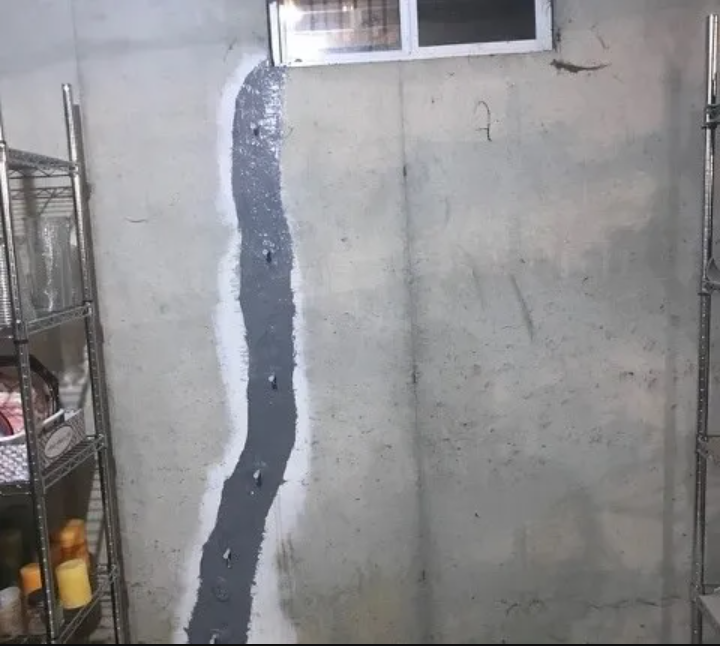
Foundation Crack Repair Methods
When it comes to fixing foundation cracks, there’s no “one size fits all” solution—different cracks require different approaches. Below are the most effective methods that professionals use to restore strength, stability, and peace of mind to your home.
Epoxy or Polyurethane Injections
- Best For: Sealing thin cracks and preventing water ingress.
- How It Works: This technique involves injecting a specialized resin directly into the crack. The resin expands and hardens, creating a watertight seal. The process is straightforward: the crack is cleaned, ports are installed, and the resin is injected until the gap is fully filled.
- Benefits: Offers structural reinforcement alongside waterproofing. It’s a common choice for hairline and vertical cracks, particularly those on an otherwise stable foundation. Plus, it’s a minimally invasive method that doesn’t disrupt your home or landscaping.
- Keep in Mind: While effective, this method focuses on sealing the crack itself. If there’s a deeper issue—like poor drainage or shifting soil—this won’t fix the root cause.
Carbon Fiber Reinforcement
- Best For: Stabilizing horizontal cracks caused by pressure from expanding soil.
- How It Works: Carbon fiber strips are adhered to the foundation using high-strength epoxy. These strips act as tension reinforcements, preventing the crack from widening or the wall from bowing further.
- Benefits: Carbon fiber is both lightweight and incredibly strong—at least 10 times stronger than steel. It’s a cost-effective solution for preventing more extensive damage, and the installation process is quick.
- Keep in Mind: This method works best for cracks caused by lateral forces, not vertical settlement. You’ll also still need to manage the source of soil expansion to prevent recurrence.
Exterior Foundation Repairs
- Best For: Chronic issues due to environmental factors like poor drainage or water intrusion.
- How It Works: Exterior repairs are a more comprehensive approach. They can involve anything from installing a waterproof membrane around the foundation to regrading soil to ensure water flows away from the structure. In severe cases, additional drainage systems like French drains may be installed.
- Benefits: By addressing external stressors, you’re solving the problem at its source. This method helps prevent future cracks and protects your foundation against ongoing wear and tear.
- Keep in Mind: These repairs require excavation, which makes them more labor-intensive (and costly) than interior solutions.
Underpinning or Piering
- Best For: Major settling, shifting, or sinking of the foundation.
- How It Works: This heavy-duty method involves installing steel piers or concrete pilings under the foundation to stabilize and lift it back into place. Underpinning essentially transfers the weight of your home from unstable soil to more stable strata deeper underground.
- Benefits: It tackles severe structural problems head-on, ensuring long-term stability. This is often the go-to solution for homes built on expansive soils or areas with significant ground movement.
- Keep in Mind: It’s the most invasive and costly option, but it’s worth it when your foundation needs serious rescue.
No matter the method, foundation repairs should always be handled by qualified professionals. While DIY may seem tempting for minor cracks, having an expert assess the situation ensures you’re not just patching over a larger underlying problem. The good news? Modern repair techniques are precise, durable, and designed to protect your home for decades.
Preventing Future Foundation Cracks
Foundation repair is one thing; prevention is another. The goal isn’t just to fix today’s problems but to ensure tomorrow’s don’t creep up on you. Keeping foundation cracks at bay requires some straightforward, no-nonsense measures that are easy to incorporate into regular home maintenance.
Improve Drainage Around Your Home
Water’s a sneaky foe. If it collects around your foundation, it will eventually find a way in. The solution? Redirect it.
- Install Gutters and Downspouts: Make sure they’re all in working order. Downspouts should direct water at least 5-10 feet away from the house. If they’re just dumping water right at the base of your foundation, you’re creating your own problem.
- Regrade Your Yard: The earth should slope away from your home—not the other way around. It doesn’t take an expert to notice when rainwater pools where it shouldn’t. A shovel and a few hours of effort might save you a foundation repair bill.
Control Moisture Levels in Soil
Soil isn’t just dirt; it’s alive and always shifting. During dry spells, soil contracts. During wet spells, it expands. That constant push-and-pull wreaks havoc on foundations over time.
- In bone-dry summers, use soaker hoses to water the soil around your home just enough so it doesn’t shrink and pull away from the foundation walls.
- On the flip side, don’t overdo it—it’s not a swimming pool. Avoid planting water-heavy landscaping like lush gardens right up against your foundation.
Regular Inspections
No one’s saying you need to turn into a structural engineer overnight, but a quick look around every now and then can save you a lot of headache.
- Check once a year: Walk the perimeter of your home and inspect the foundation for cracks, bulges, or signs of wear like flaking concrete.
- Keep a ruler or tape measure handy: If you spot a crack, measure and jot down the size. If you’re nothing but consistent, use a pencil mark to track whether it’s growing.
- Most importantly, address issues early. Waiting until a few hairline cracks spiderweb into something serious is a rookie mistake.
Maintain Trees and Shrubs
Nature’s not your enemy, but it has its quirks. Trees and shrubs close to your house can cause their own kind of trouble—especially when their roots snake down into the soil by your foundation.
- Keep big trees at a safe distance from your home. As a general guide, plant them at least as far away as their full-grown height.
- If you’ve got vegetation nearby, trim it regularly so roots and foliage don’t hog the soil’s moisture or press against the foundation.
In the end, think of your home as a system, not just a set of walls on concrete. Each preventative measure builds upon the next to keep your foundation solid. It’s not glamorous work, but it beats the alternative—cracks, leaks, and a sinking feeling both literal and financial. Take these simple steps today, and your future self (and wallet) will thank you.
Choosing the Right Foundation Repair Professional in South Duxbury, MA
When it comes to foundation repair, not all contractors are created equal. Choosing the right professional can mean the difference between a long-lasting fix and an expensive headache. Start by zeroing in on a contractor with the essentials: proper licensing, insurance, and a track record of success within the South Duxbury area. Local expertise isn’t just a bonus—it’s essential. South Duxbury’s unique mix of sandy soils, fluctuating coastal moisture levels, and New England’s harsh seasonal changes demand someone who knows the local terrain inside and out.
Don’t shy away from asking the tough questions. How many homes with issues like yours have they worked on? What’s their game plan based on the type and severity of your cracks—quick fixes or long-term reinforcements? A quality contractor won’t just give you a canned sales pitch; they’ll make you feel confident by explaining their approach in plain language.
Insist on detailed quotes. Vague estimates that lack specifics—like the materials they’ll use or the timeline they expect—are red flags. Look for transparency. A solid contractor should also offer warranties on both their workmanship and the products they use. If they don’t stand by their work, why should you?
Lastly, dig into their reputation. Online reviews and word-of-mouth recommendations from fellow South Duxbury residents are a goldmine of information. A glowing review here and there is fine, but a consistent track record is better. Foundation repair isn’t cheap; it’s an investment. Make sure it’s in the hands of someone whose name inspires trust—not just in the short term, but for the years your home’s foundation will rely on their work.

Conclusion
Foundation crack repair isn’t something to delay. These aren’t the kinds of problems that fix themselves or wait patiently while you put off taking action. For South Duxbury homeowners, the stakes are high: your home’s safety, longevity, and value are tied directly to the health of its foundation. And ignoring the issue? That’s a shortcut to bigger headaches—water damage, structural instability, and repair bills that’ll make you wince.
The good news is that acting early puts you back in control. Whether it’s sealing a hairline crack or addressing more significant structural concerns, proper repair methods can restore your foundation’s integrity and stop cracks from snowballing into costlier, more dangerous problems. Finding a reliable professional makes all the difference. Choose wisely, and you’ll get a solution that’s not only effective but built to last.
The bottom line is simple: protect your investment, safeguard your home, and save yourself from sleepless nights wondering if that crack is getting worse. With timely intervention and preventative care, you’ll keep your foundation—and your peace of mind—solid for years to come.
Reviews from Happy Customers
Our top priority is customer satisfaction, and we work closely with clients to understand their unique needs and goals.




